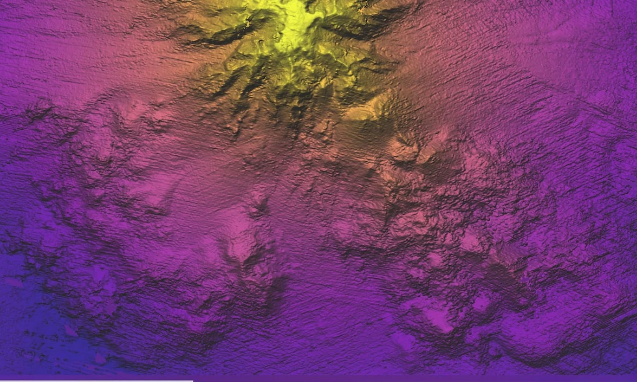Oceanographers from the Schmidt Ocean Institute have made an extraordinary discovery in the Pacific Ocean: a gigantic undersea mountain, or seamount, rising 3,109 meters from the ocean floor. Located approximately 1,448 kilometers off the coast of Chile, this seamount is taller than Mount Olympus in Greece and almost four times the height of the Burj Khalifa.

The discovery was part of a 28-day expedition aboard the research vessel R/V Falkor. Using advanced sonar technology, the team mapped the seamount in intricate detail. This mapping is significant because less than 26% of the seafloor has been explored at such depths, despite covering 71% of Earth’s surface.
The seamount, which exceeds the height of Mount Olympus (2,917 meters) and is shorter than Mount Fuji (3,776 meters), is teeming with marine life. The team found sponge gardens, ancient corals, and rare species, including a previously unfilmed species of squid and a ghostly white octopus nicknamed “Casper.”
Jyotika Virmani, the institute’s executive director, explained that their sonar system works by sending sound waves to the seabed and measuring the time it takes for them to return. This process creates detailed maps of the underwater terrain.
The expedition also yielded exciting discoveries of previously unknown species. Among them were two rare Bathyphysa siphonophores, often called “flying spaghetti monsters” due to their appearance, and the first-ever footage of a live Promachoteuthis squid.
This seamount exploration is part of the Schmidt Ocean Institute’s broader mission to map and study the deep sea. The data gathered could support the establishment of the world’s first high seas marine protected area, as per a new UN treaty adopted in 2023.
Virmani highlighted that the recent expeditions had already identified 150 new species and uncovered 20 more during this latest trip. The findings will contribute to the Ocean Census, a global initiative to discover 100,000 unknown species over the next decade.
The research underscores the importance of continued exploration and protection of our planet’s deep-sea ecosystems.



